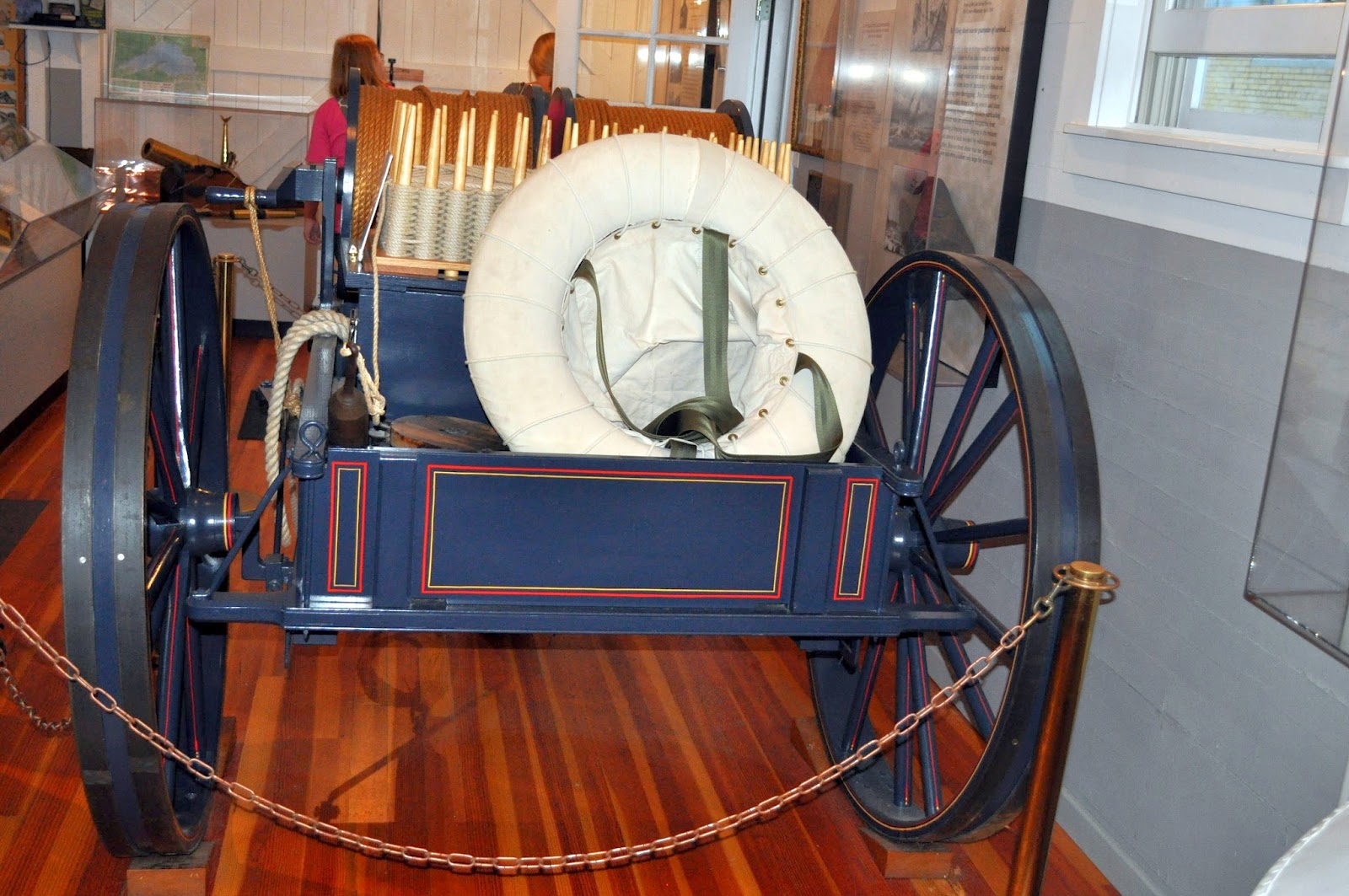Tahquamenon Falls was a somewhat remote experience, with no internet, no cell phone coverage and few groceries to buy. But the Falls were beautiful, the Crisp Point Lighthouse an adventure and the Great Lakes Shipwreck Museum an educational opportunity.
Tahquamenon Falls is sometimes called Root Beer falls due to its golden brown color that is caused by the tannic acid that leaches naturally from the trees and vegetation. While the mosquitos were in full force, we pulled out the bug spray and made the hike to both the lower and upper falls which we found to be both enjoyable and beautiful.
The trip to Crisp Lighthouse, on Lake Superior's Southern shore, was a travel adventure down 18 miles of dirt back roads Thinking how with no cell coverage this is not a place to break down (like glad we have a new truck now), on the way back, we found a stranded couple, Gary and Sue, with a flat and no air in their spare. So we gave them a ride to a town named Newberry that was a little over an hour away. Gary and Sue are the ones that educated us about Yoopers, trolls and fudgies. We had a nice visit with them and Newberry had real groceries and cell phone coverage as well. So we took care of groceries and checking emails while there.
Crisp Lighthouse became operational in 1876 and was an important life saving station along Lake Superior. The lighthouse is named after an English Lighthouse keeper, Christopher Crisp. While poking around the web we uncovered an interesting story regarding a couple finding his grave marker in Inglewood, CA. This is a nice feel good story. Christopher Crisp Uncovered
While visiting the Great Lakes Shipwreck museum, we learned how Lake Superior is considered the Graveyard of the Great Lakes and how an 80 mile stretch of her southern shores near Whitefish Point, MI is known as the graveyard coast. This area is the final resting place of more than 200 of the 550 known ships that have perished at the bottom of Lake Superior. The most famous of these shipwrecks is the Edmond Fitzgerald. The Fitzgerald sank in 1974 and was sung about one year later by Gordon Lightfoot.Music Video In 2010, Lightfoot, after learning more details of the wreck, pleased shipwreck family members when he changed the lyrics to his well known song. Lyrics Change The new lyrics clarify that the shipwreck was not due to crew error.
The Great Lakes Shipwreck museum is placed at the location of Whitefish Point light station ('station' being the lighthouse with the surrounding buildings). Erected in 1861 during Lincoln's administration, it remains the oldest active lighthouse on Lake Superior. We toured the museum, the light keepers quarters, the lifesaving station and the lighthouse while there. The museum contained the history and artifacts of several ships lost at this point, including the Fitzgerald. Out of respect for those lost on the Fitzgerald, the Fitzgerald family members requested that only the ship's bell be retrieved from the sunken ship. This bell is prominently displayed in the museum as a memorial to those lost on the Fitzgerald. Also displayed, to view up close is the White Shoal Lens. This 9 ft. diameter, 3500 lb. lens floats on a bearing surface of liquid mercury. 344 separate prisms are perfectly mounted enabling a very modest light source to be refracted and magnified so that it can be seen over 28 miles away. A clockwork mechanism, drives gears to turn the unit, regulated by a pendulum that drops 44 ft. Every 2 hours and 18 min throughout the night, the light keeper needed to wind the mechanism. This lens provides a distinct 7 1/2 second pause between light beams. The museum also houses artifacts from other shipwrecks including the Comet(sank 1875), the John B Cowle(sank 1909), the Drake(sank 1882), the Samuel Mather(sank 1891), the Miztez(sank 1921), the Myron(sank 1919), the Niagara(sank 1856), the John M Osborn(sank 1884), the Sagamore(sank 1901), the Superior City(sank 1920) and the Vienna(sank 1892).
At the life saving station we were impressed to learn how the life saving stations of the Great Lakes have saved over 55,000 people. Usually the waters were rough when a shipwreck occurred. The light station workers would use a cannon to shoot a weighted long rope, that they brought out on a life saving beach cart full of line. The rope would be shot onto the ship with directions of how to tie off. The shipwrecked victims would then basically zip line, one at a time, to the safety of land.
The lighthouse keeper's house we visited here, was the nicest we have seen yet. It was first built as one family residence. But the light keeper had to wind the mechanism every 2 hours and 18 minutes so several years into this an assistant lighthouse keeper was approved and an additional residence was built. The design is interesting. The two houses, back to back, are mirror images of one another with a walkway on the second floor that is accessible in the middle from both keepers homes and connects to a walkway that leads to the actual lighthouse.
Tahquamenon Falls (upper) Tahquamenon Falls (upper) Crisp Point Lighthouse View of Lake Superior from inside the top level of the Crisp Point Lighthouse Whitefish Point Lighthouse Fitzgerald Ship Bell White Shoal Lens Life Saving Beach Cart Directions Shot to Distressed Ship Inside Light Keepers Home Inside Light Keepers Home Inside Light Keepers Home |












No comments:
Post a Comment